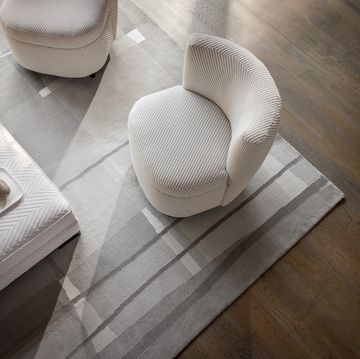The Persian, Moroccan, and shag rugs have all had their moments. But now it’s time for Tibetan knot rugs to take over. Featuring a lush texture and a high pile, these coverings aren’t just trendy, but rather an enduring design element that will last as long as your forever home.
Are you ready to tie yourself down? Perennials, a luxury performance textile brand, can help.
HOW DO TIBETAN KNOTS WORK?
Rugs that you can sink your feet into require centuries-old, hand-knotted techniques. The yarn is wrapped around both a metal rod, laid along the length of a carpet, and other threads, then cut to create luscious pile tufts. Perennials’ pieces average 80 knots per square inch, despite the fact that the number of knots can vary.
FROM WHERE DOES THE NAME COME?
Tibetan rugs are traditionally made with wool from Tibetan highland sheep, giving them their name from their homeland. They date back hundreds of years, but were not first documented until the early 1900s. Having fallen into decline following the 1959 Chinese invasion of Tibet, Tibetan immigrants living in India and Nepal revived the craft in the latter half of the 20th century. Our Tibetan knot rugs are made by local weavers in our India facility.
WHAT IS THE BEST WAY TO CARE FOR TIBETAN KNOT RUGS?
A Perennials rug is remarkably easy to clean and fade- and mildew-resistant because it’s made of 100-percent solution-dyed acrylic.
Most stains can be cleaned with simple blotting with dish detergent and water (followed by a thorough rinse in water). For tougher stains, one part bleach and two parts water will do the trick. Dirt and crumbs can be cleaned with regular vacuuming; just use a canister vac without a beater bar or set it to the highest setting so fibers aren’t pulled.
WHAT ARE THE BENEFITS OF USING TIBETAN KNIT RUGS IN YOUR HOME?
Having a walk on clouds-like feel, Tibetan knot rugs are ideal for bedrooms. Their stain resistance makes them an excellent choice for dining spaces as well. Perennials offers a variety of Tibetan knot rugs, ranging from Timothy Corrigan’s traditional designs to Martyn Thompson’s abstract designs, so there’s something for every aesthetic.
